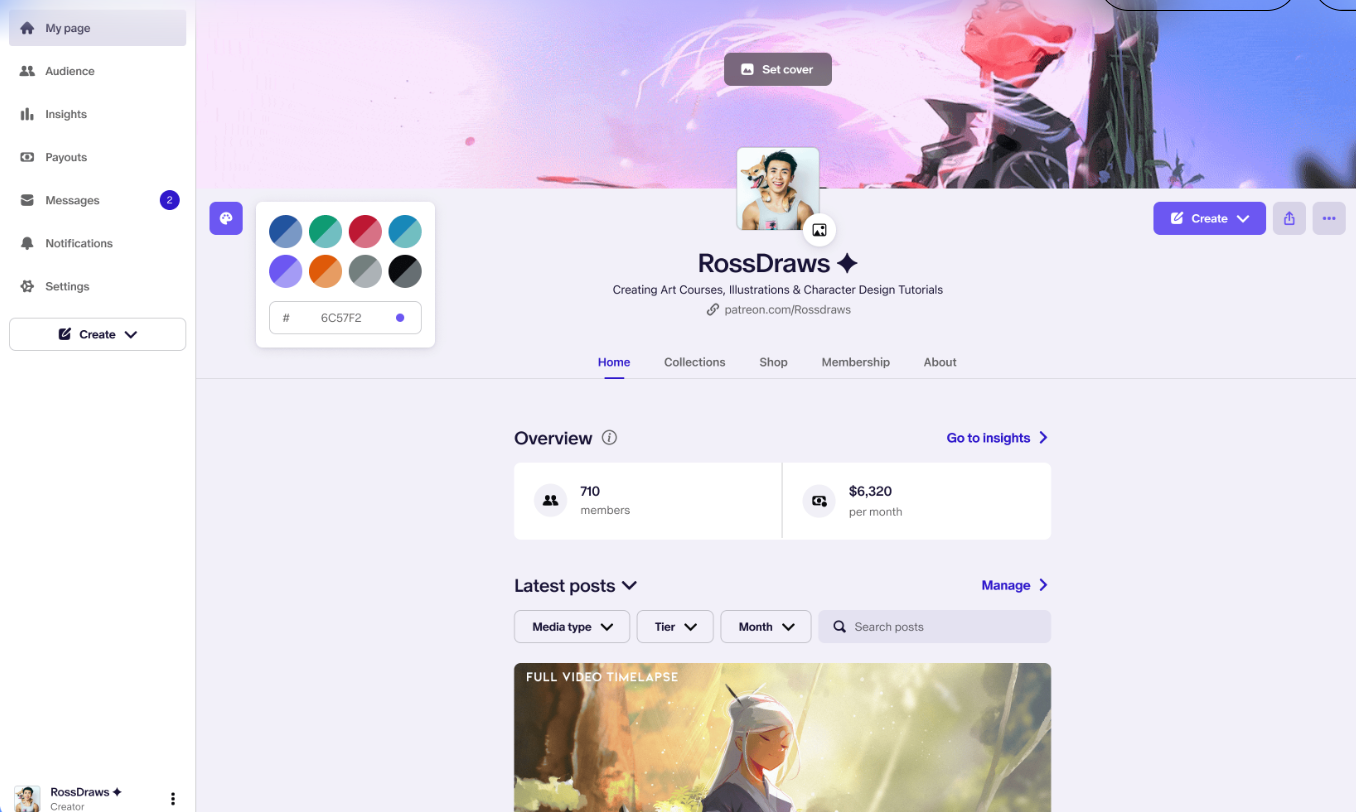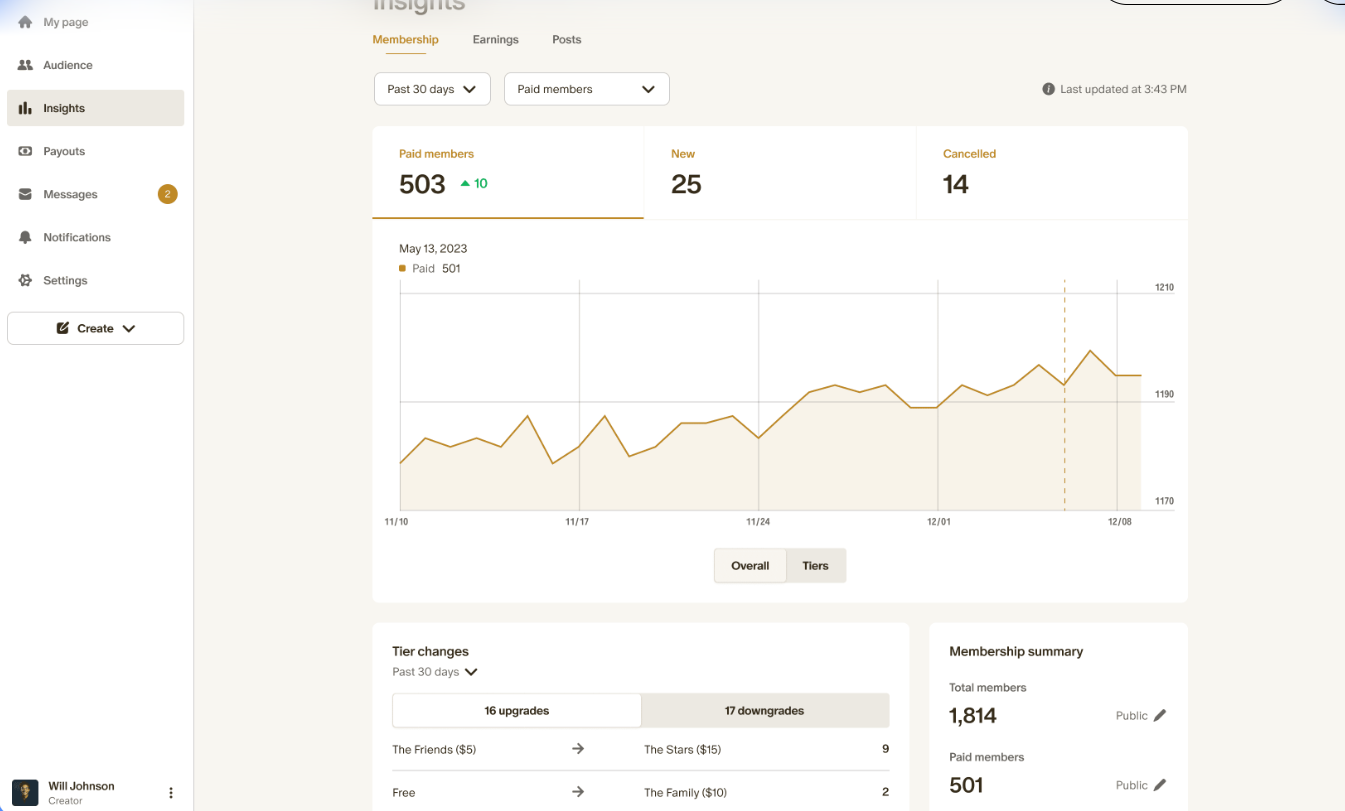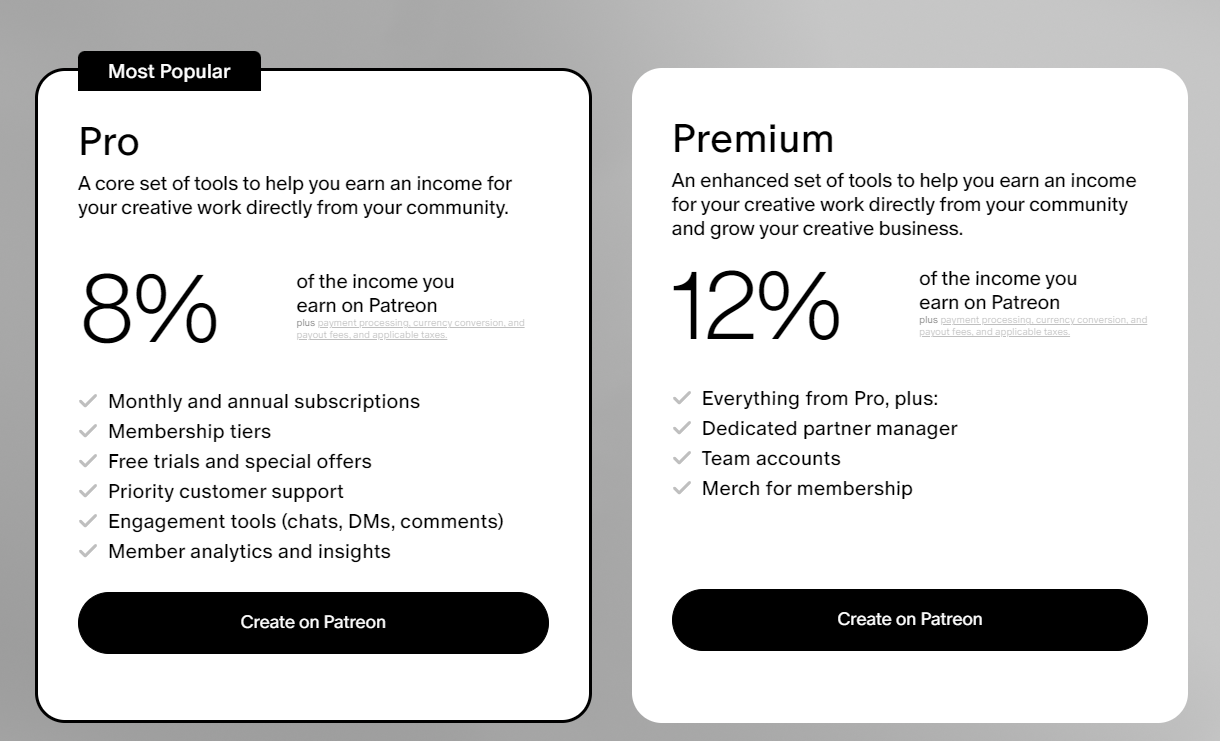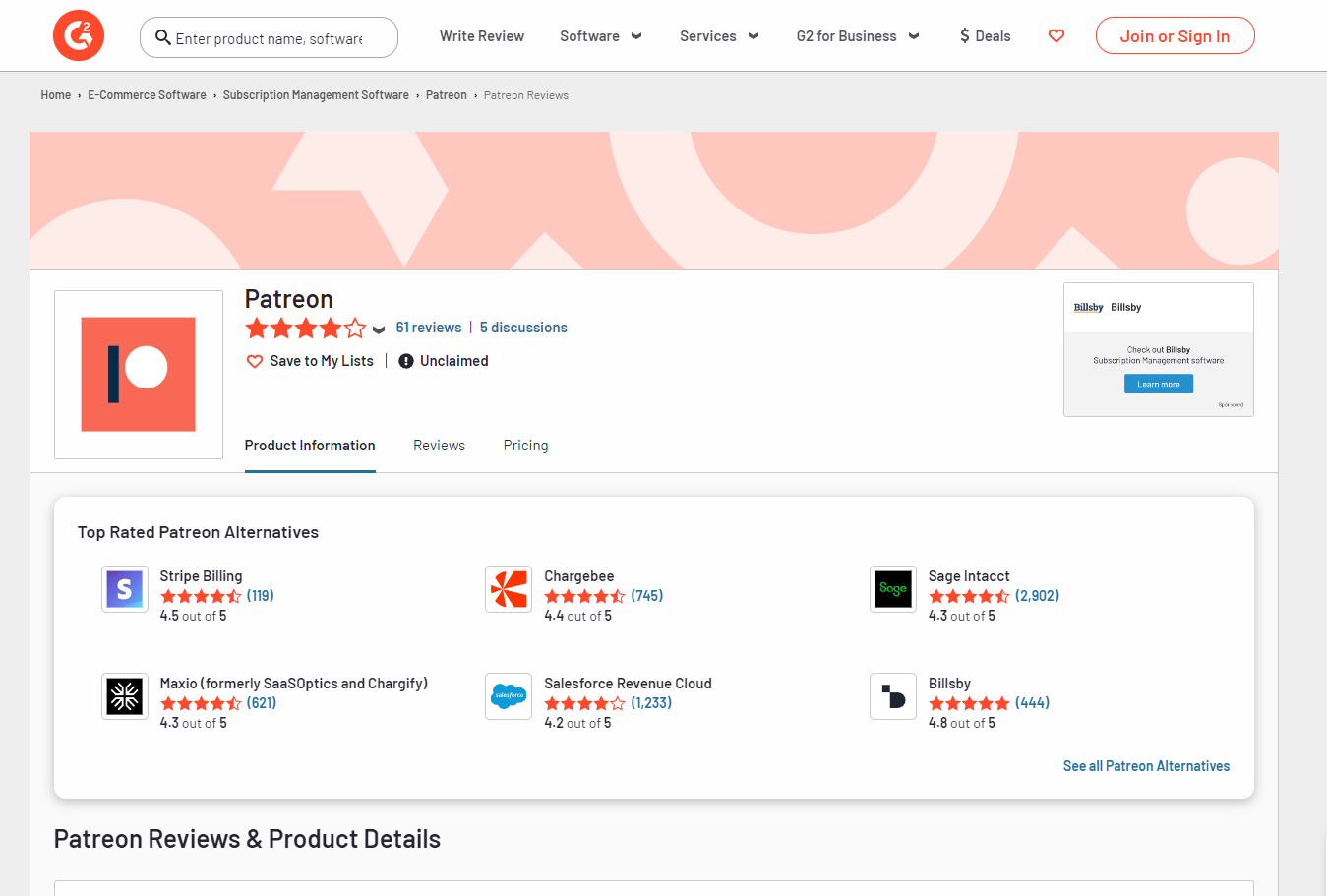When it comes to choosing the right email marketing platform for an online business, Drip and Patreon are two top contenders. Both platforms allow entrepreneurs to sell products and services, build engaged communities, and leverage powerful marketing tools.
However, they cater to different business models – Drip specializes in email marketing and automation while Patreon enables creators to accept recurring payments for exclusive content.
In this in-depth Drip vs Patreon article, we evaluate the two platforms across several key criteria: market position and popularity, ease of use, customization, features and functionality, website performance, customer support, pricing, reviews, and reputation. By exploring the strengths and weaknesses of each platform, you will gain clarity on which solution aligns closest with your business goals and target audience.
1. Understanding the Basics
Drip was founded in 2013 by Rob Walling and Mike Perham as an e-commerce and email marketing platform designed specifically for digital products and online courses. Over the past decade, Drip has become one of the most widely-used solutions in its market niche, now powered by the SaaS giant Leadpages.
Patreon was launched in 2013, created by musician Jack Conte and developer Sam Yam. It quickly gained popularity as the go-to membership and subscriptions site for online content creators, with over 200,000 active creators currently using the software. Patreon holds a significant market share in its particular segment.
Both companies have established strong brand recognition and loyal customer bases:
- Drip Users Group
- Patreon Creators Facebook Page (over 313,000 followers)
In terms of broader popularity and market penetration, Patreon likely edges out Drip slightly given its focus on all types of digital creators rather than solely info-product entrepreneurs. However, Drip continues its market dominance specifically by leveraging email marketing to sell online courses and coaching programs.
2. Features and Functionality
Automation
Drip
Drip focuses heavily on providing robust email marketing automation for things like welcome sequences, lead nurturing campaigns, segmentation, and tagging. Users can create multi-step workflows to automatically deliver a series of templatized emails based on subscriber actions and characteristics.
For example, you may want new subscribers to receive a 5-day onboarding sequence while existing customers get an automated birthday coupon. Workflows make this achievable without ongoing manual effort. Drip also offers if/then branching conditional logic.
Additionally, Drip allows easy automation of SMS messaging flows in conjunction with email. It has native Zapier integration to connect other platforms into sequences, such as automated posting of social media updates when a new email goes out.
Overall, Drip provides extremely flexible automation primarily centered around email and SMS messaging campaigns. The visual workflow builder and pre-built templates make it easy for beginners, while advanced conditional logic gives experienced marketers ample sophistication.
Patreon

Compared to Drip, Patreon has relatively limited native automation capacities mostly related to handling various member benefits.
As a creator, you can use your account to launch multiple kickstarter campaigns, create subscription crowdfunding websites, and set up structures where higher-tier patrons automatically get access to exclusive content feeds like video, audio, and documents. Automated member messaging is another core piece.
However, to access similar segmented email marketing features offered in Drip, users of the crowdfunding platform need to integrate third-party services like MailChimp, ConvertKit, or Klaviyo. This makes building automated sequences more tedious and complex. Most Patreon creators focus nearly all energy on producing enticing member perks rather than optimizing complex funnels.
In summary, Drip provides superior native tools for multi-channel automation of emails, SMS, and integrations to streamline communicating with a subscriber base. The workflow visual editor simplifies creation without limiting functionality. Patreon automation works smoothly for basic access gating of content feeds but requires third-party additions to match Drips capacities.
Winner: Drip
With its dedicated focus on email marketing automation and workflows, Drip earns the win for having far more robust out-of-the-box capabilities optimized specifically for user acquisition funnels, lead nurturing, and complex segmentation. The visual workflow builder provides unmatched UX.
Email Templates
Drip
Drip provides users access to hundreds of professionally designed email templates spanning categories like welcome sequences, promotions, course launches, webinars, and more. These templates feature drag-and-drop modular blocks making customization effortless.
The template options enable users to quickly build beautiful, branded emails that display flawlessly across all major email clients and devices. You can easily tailor template structure, content, images, colors, and fonts to match your business aesthetic. Additionally, Drip allows hosting images and files directly within the platform so they load quickly inside emails.
While template blocks provide convenience, marketers retain fine-grained control over HTML/CSS when desired. Pre-built templates offer an ideal starting point so that designing good-looking emails doesn’t require starting from a completely blank slate every time. Format flexibility makes it possible to achieve nearly any layout.
Patreon
Currently, Patreon does not provide any built-in native tools for sending bulk emails to patrons. To access email marketing features, users must first connect to an external provider like MailChimp to manage subscriber communications.
Therefore, the email customization and template experience fully depends on whatever third-party provider gets integrated. Patreon focuses solely on facilitating creators in gating access to member feeds and content libraries—not broadcast messaging.
This hands-off approach has pros and cons. Relying on another service allows leveraging whichever solution offers the strongest deliverability rates, automation features, and templates to match individual needs. However, it also introduces more complexity into the tech stack rather than having email inclusive on one platform.
Ultimately, Patreon itself supplies no email templates whatsoever, while Drip furnishes users with an abundance covering all common use cases.
Winner: Drip
With its large gallery of professionally designed email templates and user-friendly customization options, Drip easily bests Patreon—which requires connecting an external email provider to access any templates at all. Convenience wins.
Segmentation
Drip
Drip provides robust tagging and segmentation tools for dividing contacts into groups for targeted messaging. You can create tags and organization levels based on any attributes, such as customer lifecycle stage, purchase history, demographics, interests, and more. Contacts can have unlimited tags applied to them.
The platform makes it easy to visualize the percentage of subscribers matched to each tag. You can then leverage these dynamic groups across email automation workflows, personalization fields, reporting dashboards, and integrations with other apps.
Additionally, custom fields allow attaching extra metadata to each contact record for more advanced segmentation. For example, tracking individual ticket numbers or survey responses. Power users can import data from CSV to populate custom fields en masse.
Overall, Drip equips users with all essential tagging and segmentation capabilities in an intuitive interface without limiting complexity for advanced personalization.
Patreon

Patreon also enables creators to organize members into variable tiers with defined benefits and access permissions. Higher tiers unlock additional content libraries, bonus media, exclusive posts, special roles in online communities, and more.
However, the tiers model is primarily structured around gating feeds rather than fine-tuned email segmentation. Patreon’s focus stays on consolidating all benefits management in a central dashboard rather than robust tagging tools for external-facing communications.
The membership tiers allow basic grouping such as Classifying fans as “Supporters,” “Patrons,” or “Honored Patrons” to make certain posts viewable. But without deep integration of a dedicated email marketing platform, advanced subscriber segmentation remains challenging on Patreon.
In summary, Drip specializes specifically in user tagging and custom field management for dynamic segmentation in email and SMS automation—functionality that Patreon notably lacks natively.
Winner: Drip
For easily organizing contacts into labeled segments for targeted communications, Drip wins thanks to its purpose-built tools exceeding Patreon’s capabilities mainly structured for access gating.
Analytics
Drip
Drip provides robust email analytics allowing granular tracking of key metrics like open, clickthrough, and conversion rates across campaigns, workflows, and segments. Users can view this data organized by individual messages, full automation sequences, or globally.
Easy-to-interpret graphical reports display essential stats like unique opens, social shares, link clicks, unsubscribes, and revenue attributed to each email. You can additionally drill down into subscriber-level activity to view their engagement across all messages received.
For advanced analysis, Drip’s segmentation tools integrate tightly with campaign analytics. This empowers targeting groups based on their past response patterns and dialing in messaging accordingly.
Overall, the platform excels at email and SMS analytics with powerful segmentation to derive actionable insights for optimization.
Patreon

Patreon focuses its analytical reporting on helping creators understand membership program performance more so than email metrics. Core reports display earnings, the number of new versus recurring patrons, posts published, and other membership activities driving revenue.
However, without native email functionality, tracking detailed inbox analytics requires funneling campaign data from a third-party provider like Mailchimp back into Patreon for consolidation. This makes for a more complex process compared to Drip’s unified experience.
For core membership metrics tied to monetization rather than email specifically, Patreon delivers excellent visibility. For instance, you can see what is a good page standard for views in a day or a single month. However, supplementary services remain necessary for holistic analytics.
In summary, Drip’s purpose-built email analytics dashboards provide deeper insight than Patreon’s membership reporting. However, Patreon still supplies critical numbers around patron count and earnings.
Winner: Drip
For email campaign-specific analytics related to opens, clicks, and conversions, Drip earns the win for its robust unified reporting tailored to email marketers’ needs. Drip provides intuitive graphical reports and segmentation tools for drilling into the engagement and revenue generated across automation, workflows, and subscriber segments.
This degree of email-centric analytics and segmentation exceeds the capabilities within Patreon’s membership reporting.
Unique Features
Drip
One standout capability provided by Drip is advanced lead capture forms and popups to convert website visitors into subscribers. Users can pick from a large library of pre-made form templates for embedding across sites using a simple placement widget.
Forms come pre-connected directly into defined workflows for triggering sequences or tags based on opt-in actions. Additional niceties include two-step opt-ins, SMS sign-up collection, dynamic field population, and partial submissions recovery in case of drop-off.
For further customization, a full-form builder allows crafting layouts tailored to any goal. Overall, Drip’s lead gen forms streamline building an email list.
Patreon

Patreon shines in offering creators tools to manage memberships and accept recurring payments for exclusive content. The platform enables configuring multi-tiered membership packages, benefit definitions, patron management portals, and other monetization functionality.
Additions like Discord community integration, merchandise shops, and support for pay-per-post structures provide more avenues for converting fans into paying subscribers so you can make more money. Member profiles also help build stronger reader relationships.
While partly possible to rig together in Drip, Patreon focuses directly on the unique needs of bloggers, podcasters, streamers, and other content publishers earning income from their work. The platform’s devotion to this specific niche makes it unmatched.
In summary, both tools feature capabilities that support two differing major business models anywhere in the world—Drip for marketers and Patreon for community creators.
Winner: Tie
Both Patreon and Drip offer tons of value. However, Drip dominates in email while Patreon leads for content monetization. Both platforms showcase strengths tailored to their respective target customers for which no clear singular winner exists across contexts. They excel in separate disciplines so it’s up to you which platform makes better sense according to the finance or subscriber goals of your company.
3. Ease of Use
Drip
Drip provides a highly intuitive user interface making the platform enjoyable to navigate while maintaining substantial depth below the surface. Core areas use clean, visually engaging designs that simplify working through multi-layered workflows, automation building, and campaign creation.
Despite packing enterprise-grade power under the hood, Drip manages to tone down complexity for new users rather than overwhelming it. Setting up the first campaign or onboarding sequence takes just minutes thanks to handy wizards that let you take your idea to fruition in a few clicks.
Yet the platform scales to support sophisticated functionality like customized APIs and Zapier integrations when skills improve.
Thoughtful touches like in-line help guides, hovering tooltips, and suggested use case prompts provide an extra safety net if ever unsure of the next steps while learning. However, the UX flows logically enough that any marketer comfortable using basic software should feel at home quickly.
Patreon

As a platform catering specifically to creators rather than marketers, Patreon similarly prioritizes ease of use but through a slightly different lens. The dashboard focuses mainly on giving publishers tools to handle membership payments, organize content, and facilitate community engagement.
While payments and posts might replace emails and automation seen in Drip, Patreon’s core interface still enables configuring a basic presence in just minutes via step-by-step walkthroughs. Customizing the look and feel of member profile pages follows intuitive editing workflows.
For creators learning to monetize online content for the first time, Patreon skips unnecessary complexity that would otherwise create barriers. Simplicity helps artists share their passion rather than sweating platform technicalities.
Winner: Tie
Both Drip and Patreon take praiseworthy measures to ensure approachable interfaces for their respective target users. Intuitive onboarding flows catered to customer goals allow nearly anyone to start benefiting from built-in capabilities without prior expertise.
4. Email Deliverability
Drip
As an email marketing-focused platform, Drip has invested heavily in scalable proprietary delivery infrastructure and optimization best practices purpose-built for transactional and marketing messages. This includes dedicated IP warming, compliance monitoring, inbox placement testing, ISP relationship building, and sender reputation management.
Patreon
Since Patreon doesn’t have native email capabilities, deliverability depends entirely on whatever external email provider gets integrated. The platform itself would have no visibility or influence over reputational factors affecting inbox placement with ISPs. This could introduce deliverability issues if the chosen provider lacks their own mature sending infrastructure.
Winner: Drip
With email as its main focus, Drip is structured around deliverability from the ground up rather than relying on supplementary tools. Its custom infrastructure offers a leg up on Patreon’s patchwork approach regarding email reputation.
5. Customer Support and Community
Drip
Drip provides email-based customer support for all subscribers included with paid plans. Users can also access an extensive library of self-help resources such as knowledge base articles, platform guides, troubleshooting documentation, and webinars.
An active online community exists across social media for advice and best practice sharing:
- Drip Facebook User Group (over 18,000 members)
Many third-party agencies and freelancers offer Drip-specialized implementation services as well.
Overall, multiple reliable support avenues cater to both technical issues and broader strategy assistance for putting the toolset to work. Email and docs cover basics while the community enables peer learning.
Patreon

Patreon focuses customer support predominantly on creators through one-on-one consulting for building a sustainable membership business. All paid plans include a dedicated Partnership Manager for personalized assistance in securing patrons.
Other options like webinars, Slack channels, and a private forum foster further community engagement among creators.
Beyond direct monetization guidance, Patreon sticks close to its niche. General troubleshooting falls more on users or third parties less uniquely tied to the platform itself.
In summary, both platforms align support channels to their specialties. For creators, Patreon consulting offers unmatched revenue strategy expertise and onboarding. Drip provides mixed guidance better catering to diverse marketer challenges.
Winner: Tie
Drip and Patreon take different approaches, but each surrounds customers with resources fitting their specific goals. Freemium users get more variety from Drip while Patreon focuses on pampering those serious about monetizing creative work. Both models have merit.
6. Integrations
Drip
Drip, recognized for its comprehensive email marketing tools, doesn’t fall short in the integrations department either. One of the standout features of Drip is its seamless integration with popular e-commerce platforms like Shopify, WooCommerce, and Magento.
This means that if you’re running an online store on any of these platforms, Drip can effortlessly sync customer data, purchase history, and more, allowing you to craft tailored email campaigns.
Moreover, Drip extends its compatibility by integrating with various CRM tools such as Salesforce and Zoho CRM. This ensures that your customer relationship management is streamlined, allowing for a more personalized interaction with your audience.
Additionally, for those heavily invested in content marketing, Drip’s integration with WordPress can be a game-changer, automating email campaigns based on content engagement.
When it comes to payment gateways, Drip offers integrations with renowned platforms like PayPal and Stripe. This facilitates smoother transactions and better tracking of customer purchases, aiding in targeted marketing efforts.
Furthermore, for those delving into webinars or online courses, Drip’s integration with platforms like Zoom and Teachable can simplify user engagement and content delivery strategies.
Patreon

Patreon, primarily known for its membership and subscription services for creators, has curated a set of integrations to amplify its functionality. At the forefront, Patreon integrates seamlessly with content creation platforms such as YouTube, WordPress, and Twitch. This facilitates creators in monetizing their content directly, providing exclusive perks to their patrons without any hitches.
For artists and creators relying on merchandise sales, Patreon’s integration with platforms like Shopify and Printful is noteworthy. This allows creators to effortlessly manage merchandise sales, track inventory, and provide exclusive offers to patrons.
Additionally, for podcasters looking to monetize their content, Patreon’s integration with podcast hosting platforms like Podbean and Anchor ensures a smooth transition from content creation to monetization.
When it comes to payment processors, Patreon supports integrations with widely used platforms like PayPal and Stripe. This ensures creators receive timely payments and patrons experience a seamless payment process.
Furthermore, for those focusing on community engagement, Patreon’s integration with Discord fosters a community-centric approach, allowing creators to engage with their patrons in real time.
Winner: Drip
After a comprehensive analysis of both platforms, Drip emerges as the winner in terms of integrations, primarily due to its extensive compatibility with e-commerce platforms and CRM tools. While Patreon offers a solid array of integrations for creators, Drip’s versatility in catering to businesses of various sizes and industries gives it an edge.
The seamless integration with popular e-commerce platforms and CRM tools positions Drip as a more versatile and adaptable solution for businesses aiming for robust marketing and customer relationship management strategies.
7. Pricing
Drip
Drip’s pricing model is structured around the needs of growing businesses, offering a tiered approach that aligns with varying business sizes and objectives. Starting with their Basic plan at $39 per month, Drip provides essential email marketing tools suitable for small businesses looking to establish their online presence.
As you scale, the next plan up unlocks advanced features like automation workflows and integration capabilities with popular e-commerce platforms. For businesses seeking a tailored solution, Drip offers custom pricing based on specific requirements, ensuring scalability and flexibility.
It’s essential to note that Drip operates on a subscriber-based pricing model, meaning the cost increases as your subscriber list grows. While this may seem daunting for businesses with a rapidly expanding audience, Drip’s feature-rich platform justifies the investment, offering robust analytics, segmentation tools, and personalized customer experiences.
Patreon

Patreon adopts a creator-centric pricing model, designed to support artists, writers, podcasters, and other content creators in monetizing their work. Patreon’s platform offers three main pricing tiers: Free, Pro, and Premium.
The free plan provides basic tools for creators to build a community and engage with patrons. For example, you can create two subscription crowdfunding websites to help you raise funds for your channel.
As creators seek to unlock advanced features like exclusive content access, analytics for crowdfunding campaign efforts, and merchandising capabilities, they can opt for the Pro plan at a fee of 8% of their income per month.
For creators aiming to leverage premium features like dedicated support and marketing assistance, Patreon’s Premium plan, which takes 12% of all your earnings, offers a comprehensive suite of tools tailored to maximize monetization opportunities.
Additionally, Patreon applies a transaction fee ranging from 5% to 12%, depending on the chosen plan and payment method.
While this fee may seem steep for creators, Patreon’s dedicated support, marketing resources, and expansive community justify the investment, enabling creators to focus on producing quality content without worrying about monetization strategies.
Winner: Drip
Upon evaluating the pricing structures of both platforms, Drip emerges as the winner, primarily due to its transparent and scalable pricing model tailored for growing businesses.
While Patreon is one of the best crowdfunding platforms that offer a creator-centric approach with tiered pricing plans, Drip’s flexibility in accommodating varying business sizes, coupled with its feature-rich platform, provides businesses with a comprehensive solution for email marketing and customer relationship management.
Drip’s transparent subscriber-based pricing, coupled with its extensive integration capabilities, positions it as a more versatile and adaptable platform for businesses aiming for sustainable growth and profitability.
8. Reviews and Reputation
Drip
Drip, with its extensive feature set, has garnered positive reviews primarily focused on its robust automation capabilities and seamless integration with e-commerce platforms. Many users appreciate Drip’s intuitive interface, allowing businesses to create sophisticated email marketing campaigns without extensive technical expertise.
According to G2, users highlight Drip’s advanced segmentation tools, enabling businesses to target specific audience segments effectively.
- G2– 4.4/5 based on 450+ user reviews
- Capterra– 4.5/5 based on 180+ reviews
- TrustRadius– 8.4/10 from 100+ reviews
However, some users have expressed concerns regarding Drip’s pricing structure, particularly for businesses with rapidly growing subscriber lists. While Drip offers scalable pricing options, businesses with extensive subscriber lists may find the costs prohibitive. Additionally, a few users have mentioned the learning curve associated with leveraging Drip’s advanced features effectively.
Patreon

Patreon, designed to support content creators, has received commendable reviews emphasizing its user-friendly platform and dedicated support for creators. As per Trustpilot, users appreciate Patreon’s comprehensive suite of tools tailored to monetize content effectively.
Creators highlight Patreon’s community-centric approach, enabling them to foster meaningful relationships with patrons and generate consistent revenue streams.
However, some of the reviews written extensively cover users’ concerns regarding Patreon’s transaction fees, which can significantly impact their dollars earned. Additionally, a few users have mentioned limitations in terms of customization options for their project, restricting their ability to personalize their creator pages fully.
Despite these concerns, Patreon’s expansive community and marketing resources continue to attract content creators seeking to monetize their work effectively on a continual basis.
Winner: Patreon
After evaluating the reviews and reputation of both platforms, Patreon emerges ahead as the winner, primarily due to its pledge for support for content creators, product manager, and community-centric approach. While Drip offers robust email marketing tools, Patreon’s platform prioritizes the needs of creators, providing them with the resources and support necessary to monetize their content effectively.
Despite concerns regarding transaction fees and customization limitations, Patreon’s expansive community and comprehensive suite of tools justify its recognition as a leading platform for content creators aiming to generate consistent revenue streams and foster meaningful relationships with patrons.
When it comes to collecting funding, the platform comes out tops even when compared with other subscription platforms in its category.
9. FAQ’s
Drip FAQs
- What are the pricing tiers offered by Drip?
Drip offers tiered pricing starting with the Basic plan at $39/month. Custom pricing options are available for businesses with specific requirements. You can create two sites for free, integrate payments information, and start monetizing your content risk-free. - Does Drip integrate with e-commerce platforms?
Yes, Drip seamlessly integrates with popular e-commerce platforms like Shopify, WooCommerce, and Magento, allowing businesses to sync customer data and purchase history effortlessly. - What automation capabilities does Drip offer?
Drip provides robust automation capabilities, including advanced segmentation tools, personalized email campaigns, and integration with CRM tools like Salesforce and Zoho CRM. - Is there a learning curve associated with Drip?
While Drip offers an intuitive interface, some users may experience a learning curve when leveraging advanced features and automation workflows effectively. - How does Drip handle subscriber growth?
Drip operates on a subscriber-based pricing model, meaning costs increase as your subscriber list grows. Businesses with rapidly expanding audiences may need to consider scaling their plan to accommodate growing subscriber counts.
Patreon FAQs
- What pricing tiers does Patreon offer?
Patreon offers three main pricing tiers: A free planthat is ideal for most creators who are just starting out. There’s also an 8%, and 12% fee of your income each month if you want access to exclusive features and support for creators. - How does Patreon support creators?
Patreon provides content creators with a dedicated platform to monetize their work, offering tools for community engagement on an ongoing basis, as well as exclusive content access, an invite-only service, and merchandising opportunities. - Are there any transaction fees associated with Patreon?
Yes, Patreon applies a transaction fee ranging from 5% to 12%, depending on the chosen plan and payment method, which can impact creators’ earnings. - Does Patreon offer dedicated support for creators?
Patreon offers dedicated support for creators, providing resources, marketing assistance, and a community-centric approach to help creators maximize monetization opportunities. - Can creators customize their Patreon pages?
While Patreon offers some customization options, creators may experience limitations in terms of personalizing their creator pages fully. However, Patreon’s comprehensive suite of tools and resources helps creators foster meaningful relationships with patrons.
Final Thoughts
Choose Drip if…
The Drip platform stands out as the ideal email marketing and automation solution for digital marketers, online course creators, and e-commerce brands using newsletters and sequences to nurture leads and drive repeat purchases. The platform makes it easy to create beautiful, personalized messages with robust reporting aligned with your own rules and objectives.
So if email continuity and conversions are core to your business, pick Drip to take full control of subscriber communications in a purpose-built tool designed specifically around email excellence.
On the other hand, if Drip doesn’t sound like the best choice for you, don’t worry! There are plenty of Drip alternatives out there for you to choose from.
Choose Patreon if…
For bloggers, podcasters, video creators, and artists monetizing content directly from subscribed backers, Patreon and its subscription management tools are likely the best fit. Effortlessly offer exclusive member benefits while accepting recurring payments such as a monthly donation tailored to creative work.
If your focus is content creation first and you crave an engaged audience supporting that passion, choose Patreon to open avenues for converting supporters into paying patrons.
I hope this guide has been helpful to you. Making the right choice for your needs is essential, so please ask any remaining questions in the comments! Our team would be happy to offer personalized advice on whether Drip, Patreon, or another option fits best for achieving your business goals through the ideal mix of features and specialization.
